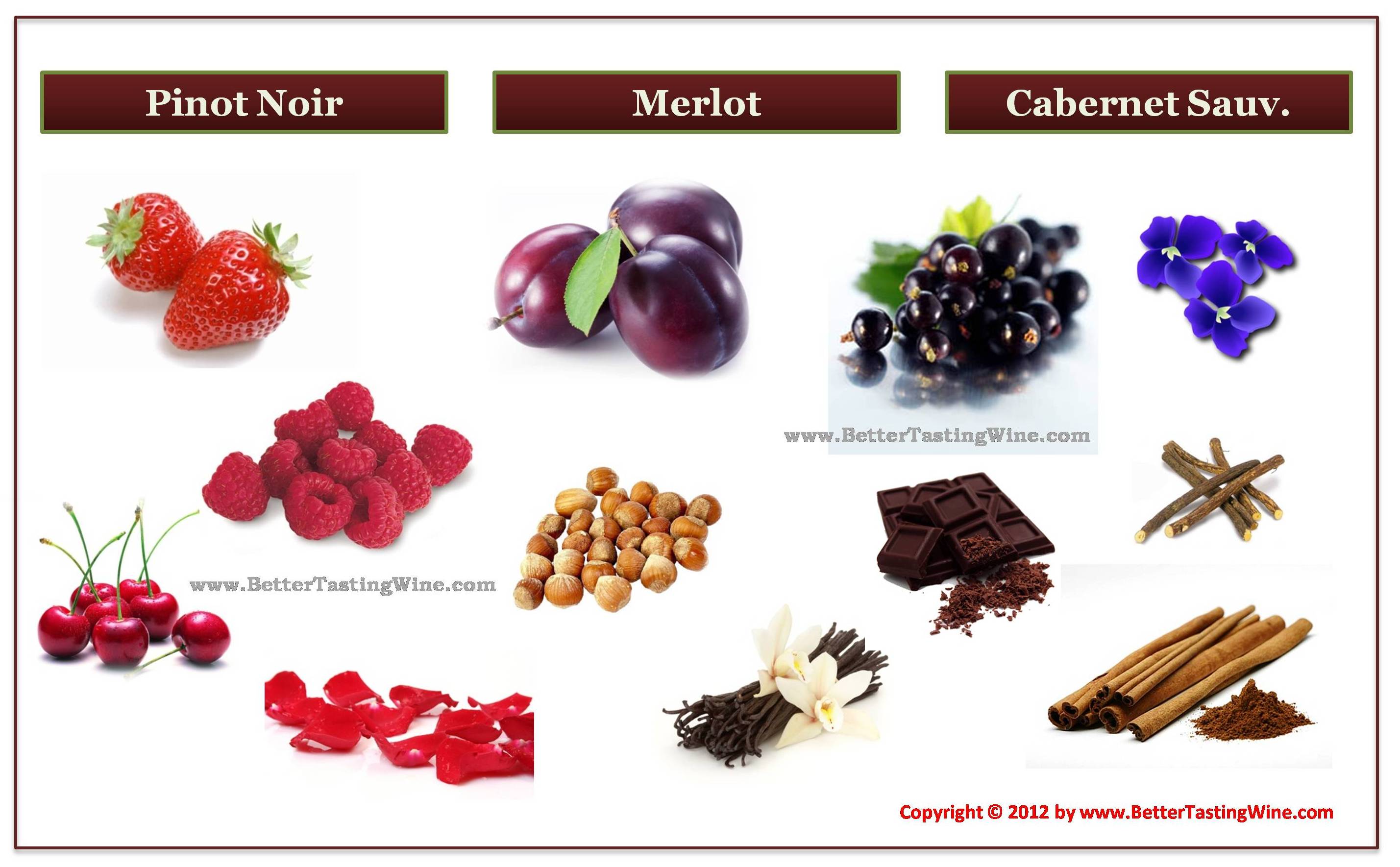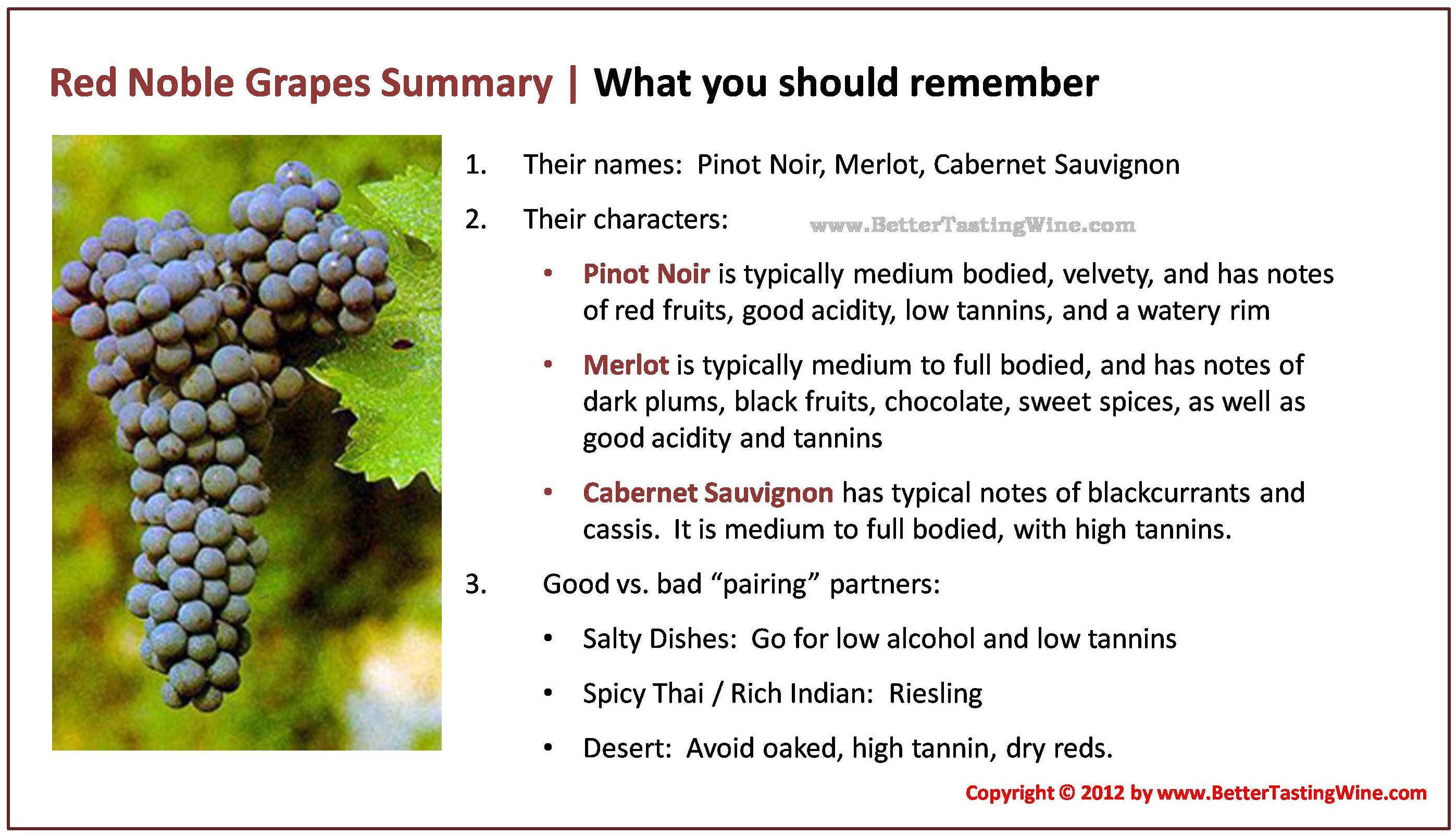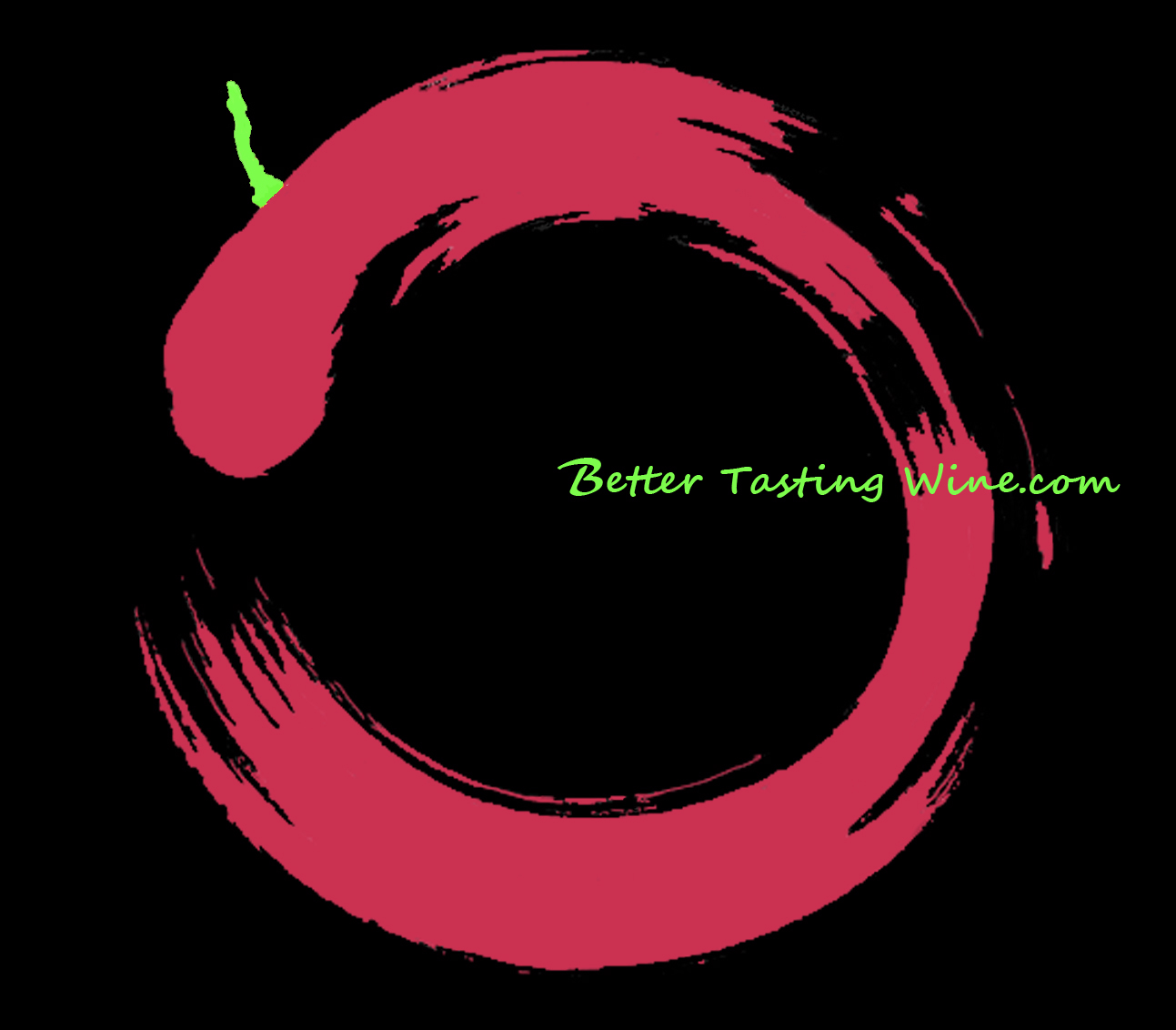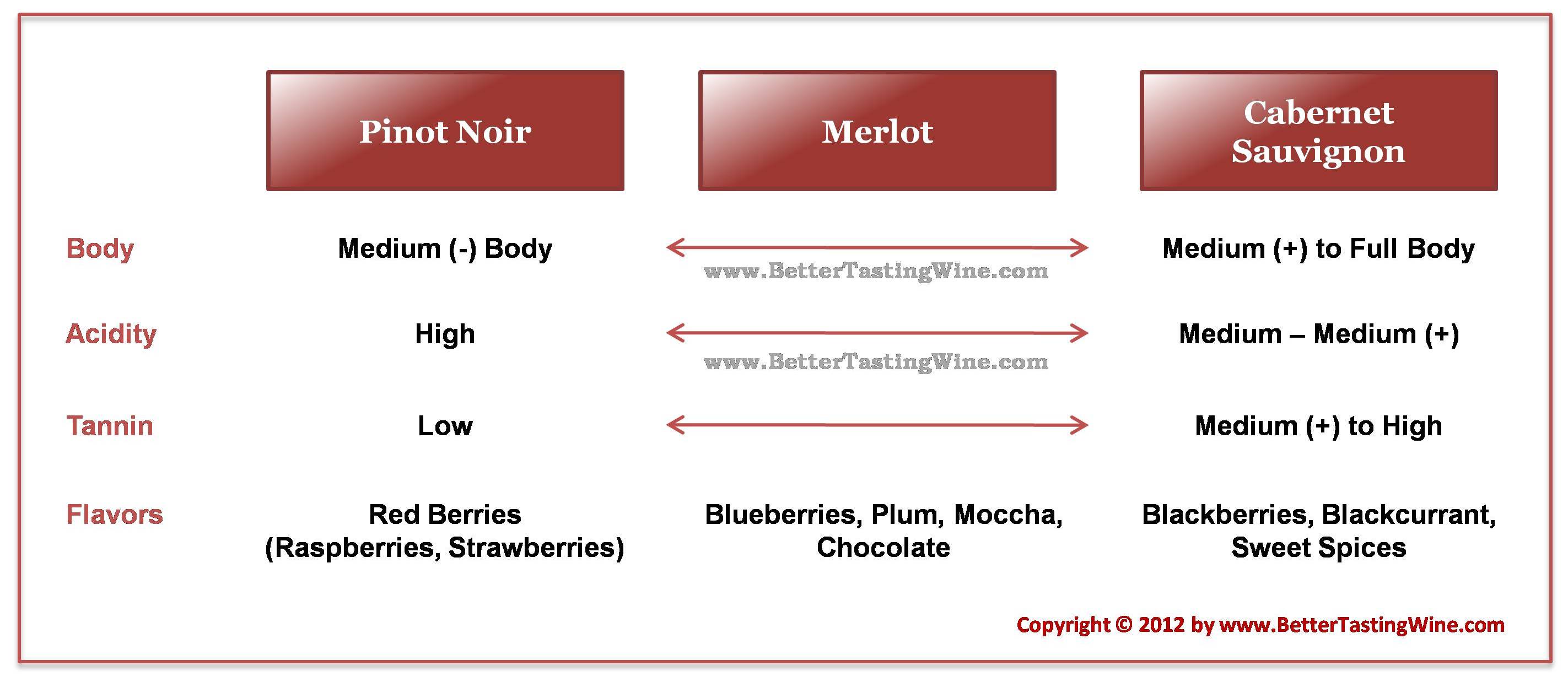Wine Tasting Tutorial: Cabernet Sauvignon vs. Merlot vs. Pinot Noir
Lesson Objectives:
- Know the basic red wine types
- Learn how to describe and differentiate red wines
- Know what to order in a restaurant
- Explore your palate preference
Lesson Preparation:
Prepare a bottle of Cabernet Sauvignon, a bottle of Merlot, and a bottle of Pinot Noir from a recent vintage. If you can, choose a wine in the US$ 10 - US$ 20 budget.
Tasting the wines side-by-side will help you compare, understand, and remember their unique characteristics. Using a young vintage will highlight their primary characteristics. The budget is to eliminate table wine quality wines and to get the most learning out of this comparative tasting exercise.
Red Wine Tasting
Recall the 3 steps to wine tasting -- observe its appearance, smell its aroma, and taste, assessing various components. (Refer to wine tasting techniques)
Let's go through each step comparing the three red grapes to experience their differences in characteristics.
Appearance
Arrange the three glasses with Pinot Noir on the left, Merlot in the middle and Cabernet Sauvignon on the right.

Observe the color of each wine. Note that Pinot Noir has the lightest color intensity, while Cabernet Sauvignon has the deepest color intensity. In addition, their colors are different shades of red. Pinot Noir's is likely to be garnet in color, while Merlot and Cabernet Sauvignon could be a bright ruby or purple.
Next tilt the glass, note the difference in the color at the rim. Pinot Noir has a watery rim. Some young Cabernet Sauvignon may have a purplish rim.
Aroma
Do a quick clean check on the wines and then give the 3 wines a generous sniff, starting with Pinot Noir, then Cabernet Sauvignon, before smelling the Merlot.
On the Pinot Noir, note the strawberries, the raspberries, and the red cherries.
On the Cabernet Suavignon, note the difference in the impression. It is black instead of red fruits -- blackcurrants, black cherries, and dark plums.
Merlot is something in between, closer to a Cabernet Sauvignon in aroma.

Palate
For comparison purpose, taste the Pinot Noir first, then Cabernet Sauvignon, and finally the Merlot.
All three wines should be dry (not sweet). Assess each wine on its body, acidity, tannin, alcohol level, flavor intensity, and length. The below figure illustrates the key differences:
Note how light the body of the Pinot Noir is compared to the Cabernet Sauvignon. It is important to drink the Pinot Noir first. Drinking the Cabernet first, your palate would be influenced by its fuller weight and you won't be able to enjoy the delicacy of the Pinot as much.
In addition, note that the Pinot Noir is more acidic; whereas the Cabernet Sauvignon is more tannic (one induces more saliva vs. the latter offers a puckery feeling).
Wine and Food Pairing
As for wine and food pairing, consider body and texture. Pinot Noir is lighter and more delicate, it pairs better with game than a fuller flavored steak. An full-bodied and oaky Cabernet on the other hand would is a perfect partner with steak, rib-eye and red meat.
Below is a list of the classic wine and food pairing:
Pinot Noir: Beef (lean, roasted, or stewed), chicken, turkey, veal chops, duck, pork loin, mushrooms,grilled or roasted quail.
Merlot: Steak, beef (grilled, roasted, prime rib), lamb, pork, chicken, duck.
Cabernet Sauvignon: Steak, beef, lamb, hamburgers, any red meat.
There is a traditional saying that red goes well with red meat and white goes well with fish. Try venturing out, pair a Pinot Noir with a grilled tuna or a grilled salmon. Tuna and salmon are example of fishes that can be paired with a red wine!
Exploring Your Palate Preference
Everyone has a different palate and thus may prefer different wine. It is important to understand why you prefer one wine vs. another. This way, we can be objective when assessing wines.
Of the three reds, which one do you like the best?
What do you like about it? The body? The texture? The aroma? Does it remind you of certain impressions?
Remember which varietal you like and explore key regions that specialize in that varietal to deepen your knowledge and appreciation.
A quick summary below on what you should remember about these three most important red wine grape varieties:

Stay informed. Follow us and subscribe here to get our latest wine insider news and tips:
Practical Wine Lessons: Wine Tasting Like a Pro | Grapes | Serving Wine | Food Pairing | Preservation | Temperature | Restaurant Ordering | Wine Labels | Wine Regions | Wine Storage | Start a Collection | Common Wine Myths.
Useful Wine Tips: Ten Facts to Become an Instant Wine Pro | Vintage Guide | Removing a Broken Cork | Serving Order of Wines | Fastest Way to Chill a Wine | Host Wine Party | Elements of a Good Wine | Wine Investment "Winning" Guide | Leftover Wine: Recipe for Vino Punch | Freeze Your Leftover Wine | Wine Moods Pairing | Best Way to Preserve Champagne After Open | Ten Must-Have Wine Accessories.
Tasting Tutorial: Cabernet vs. Merlot vs. Pinot Noir | Sauvignon Blanc vs. Chardonnay vs. Riesling | Burgundy vs US vs New Zealand Pinot Noir.
Fun Download: Wine Tasting Scorecard | Wine Serving Temperature Chart | Wine Aroma Table | 3 Must-Know Red Grapes | 3 Must-Know White Grapes | Vintage Chart | Wine Party Themes | Wine Region Maps | Grand Cru Chart | Wine and Moods Pairing Chart | Wine Quotes & Wine Humor.
Travel & Exploration: Champagne 101 | Bandol | Italy | Spain | Sherry.
Jewels & Gems: Grower Champagne Pierre Gimonnet | Gravner Ribolla - An Amber Wine Maturated in Clay | Gaja - King of Barbaresco.


